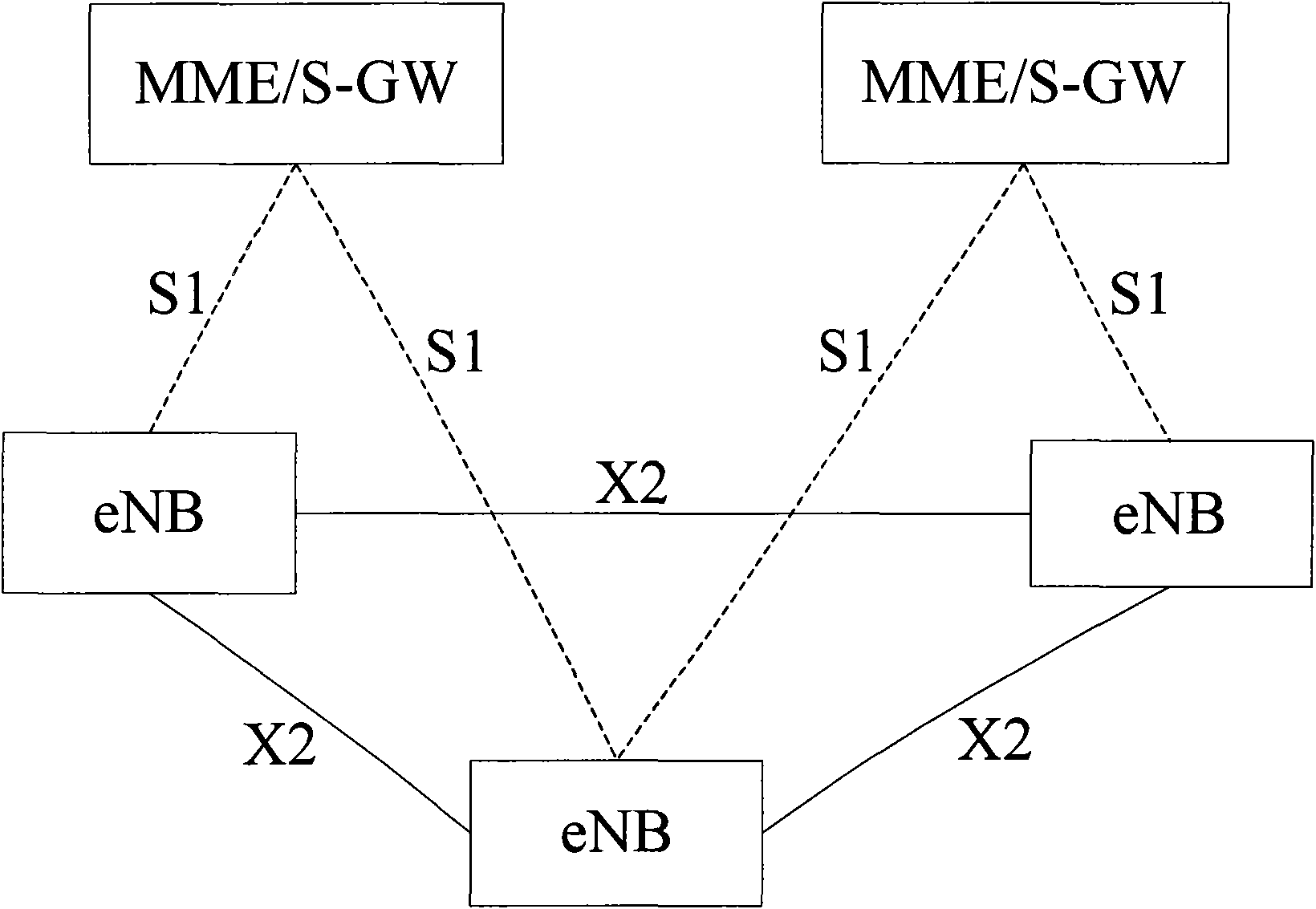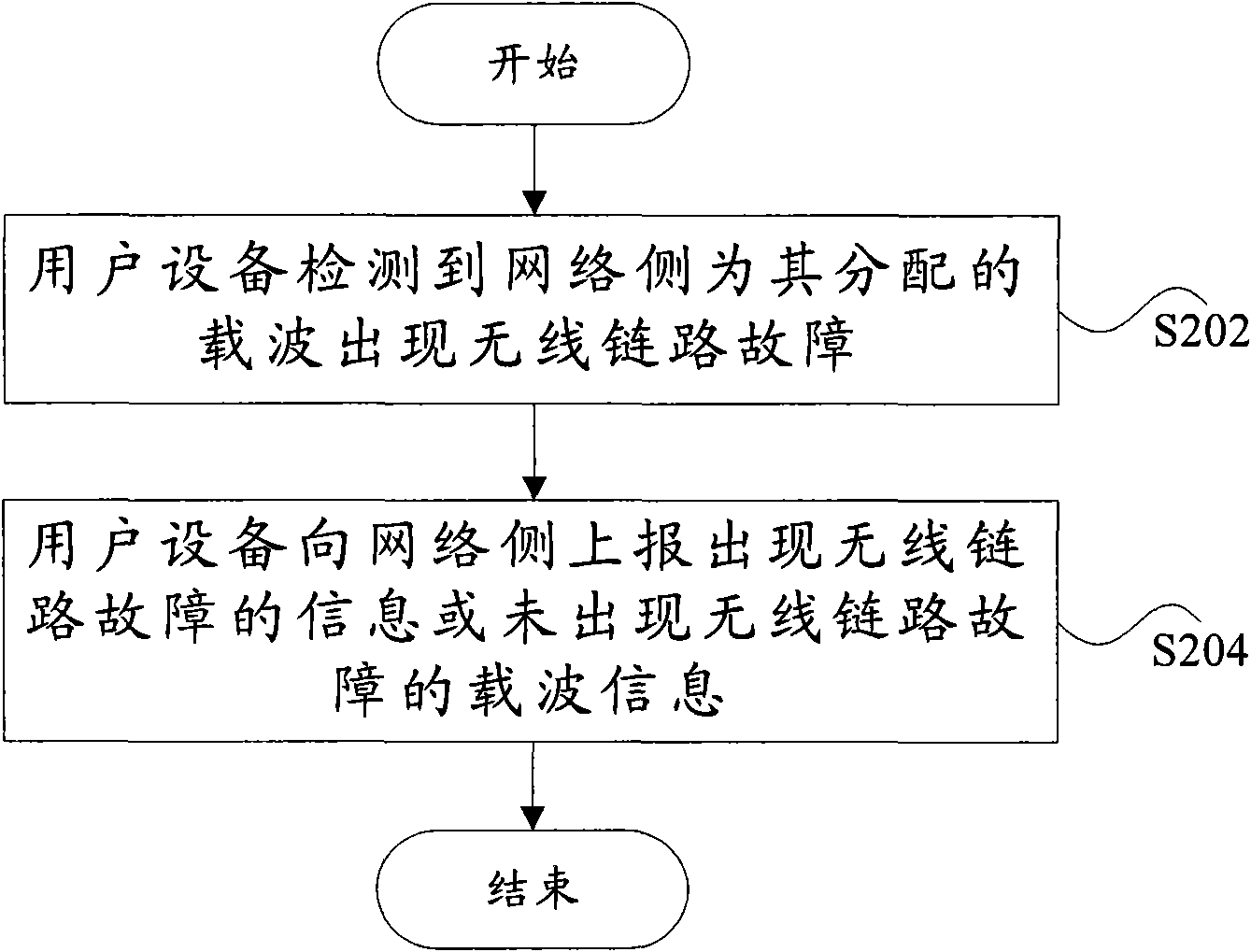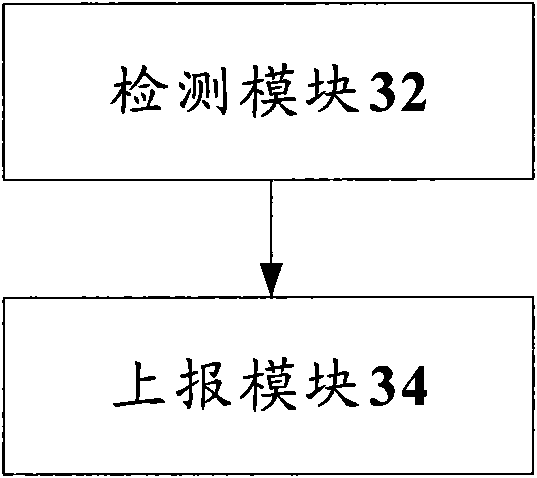Wireless link fault handling method based on carrier aggregation and user equipment
A wireless link failure, user equipment technology, applied in the field of communication, can solve problems such as wireless connection reconstruction
- Summary
- Abstract
- Description
- Claims
- Application Information
AI Technical Summary
Problems solved by technology
Method used
Image
Examples
example 1
[0039] The example application scenario is an LTE Advance system, and its network architecture is as follows: figure 1 shown. It is assumed that the cell under the jurisdiction of the base station is a carrier aggregation cell, and the UE is in an idle state in the carrier aggregation cell. The component carriers contained in the carrier aggregation cell are in Band 1 (Band 1), there are three consecutive component carriers CC(f1), CC(f2), and CC(f3) in the downlink, and there are also three consecutive carrier CCs in the uplink ( f4), CC(f5), CC(f6), it should be noted that in this example, the frequency information of each component carrier is used to identify the component carrier, but the present invention does not limit the way of carrier identification. The three downlink carriers all send system messages and paging messages.
[0040] At a certain moment, the UE initiates random access on the uplink CC (f4) and downlink CC (f1), and successfully accesses the cell of th...
example 2
[0048] The example application scenario is an LTE Advance system, and its network architecture is as follows: figure 1 shown. It is assumed that the cell under the jurisdiction of the base station is a carrier aggregation cell, and the UE is in an idle state in the carrier aggregation cell. The component carriers contained in the carrier aggregation cell are in Band 1 (Band 1), there are three consecutive component carriers CC(f1), CC(f2), and CC(f3) in the downlink, and there are also three consecutive carrier CCs in the uplink ( f4), CC(f5), CC(f6), it should be noted that in this example, the frequency information of each component carrier is used to identify the component carrier, but the present invention does not limit the way of carrier identification. The three downlink carriers all send system messages and paging messages.
[0049] At a certain moment, the UE initiates random access on the uplink CC (f4) and downlink CC (f1), and successfully accesses the cell of th...
example 3
[0056] The example application scenario is an LTE Advance system, and its network architecture is as follows: figure 1 shown. It is assumed that the cell under the jurisdiction of the base station is a carrier aggregation cell, and the UE is in an idle state in the carrier aggregation cell. The component carriers contained in the carrier aggregation cell are in Band 1 (Band 1), there are three consecutive component carriers CC(f1), CC(f2), and CC(f3) in the downlink, and there are also three consecutive carrier CCs in the uplink ( f4), CC(f5), CC(f6), it should be noted that in this example, the frequency information of each component carrier is used to identify the component carrier, but the present invention does not limit the way of carrier identification. The three downlink carriers all send system messages and paging messages.
[0057] At a certain moment, the UE initiates random access on the uplink CC (f4) and downlink CC (f1), and successfully accesses the cell of th...
PUM
 Login to View More
Login to View More Abstract
Description
Claims
Application Information
 Login to View More
Login to View More - R&D
- Intellectual Property
- Life Sciences
- Materials
- Tech Scout
- Unparalleled Data Quality
- Higher Quality Content
- 60% Fewer Hallucinations
Browse by: Latest US Patents, China's latest patents, Technical Efficacy Thesaurus, Application Domain, Technology Topic, Popular Technical Reports.
© 2025 PatSnap. All rights reserved.Legal|Privacy policy|Modern Slavery Act Transparency Statement|Sitemap|About US| Contact US: help@patsnap.com



